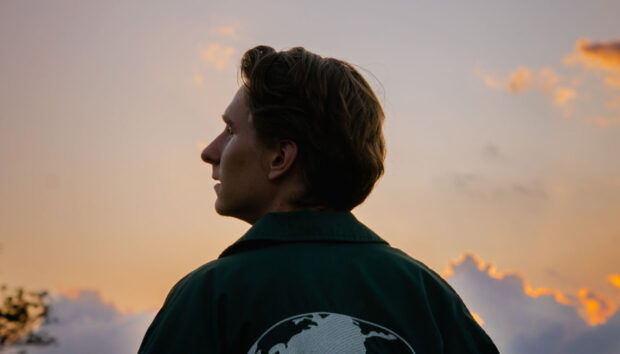With his cyberpunk assemblages drawing on sounds from across time and space, Howie Lee represents the cutting-edge of China’s blossoming electronic music scene. The co-founder of Do Hits, a Beijing-based party and record label, he has pioneered a new musical language, fusing folk traditions with experimental soundscapes and the global language of trap, bass, and techno.
His most recent album, 2019’s Tiān Dì Bù Rén, combined Chinese instruments like the erhu and rawap with an array of global sounds – glockenspiel, flamenco guitar, Auto-Tuned vocals – to confront ideas of nationalism, capitalism and ecological destruction. During spells in London and Taipei, he has also completed an MA in sound art, created an audiovisual show with Taiwanese 3D animator Teom Chen, and added to his conceptual album series, Socialism Core Value.
Howie Lee’s NI Sketch captures his playful “Made In China” aesthetic in just a few gestures. Opening with a melody line recorded on his rawap, a long-necked Chinese string instrument, it’s a dense collage of globally sourced sounds. As a heavy rhythm takes shape, elements of African and Indian percussion become knotted together in unexpected ways.
Listen to the sketch below and read on to learn how it was made. You can also grab all of the stems from Howie’s sketch here – then remix, reuse, and repurpose them however you like.
NI products used: REAKTOR 6, KONTAKT 6, POLYPLEX, DAMAGE, ABSYNTH 5, WEST AFRICA, INDIA.
Tell us about how you made the sketch – which element came first?
At the beginning I played around in Polyplex and found some good drums to record the main pattern, then layered on more distorted sounds from Damage and added extra percussion from the West African sound pack.
To make the intro, I recorded myself playing rawap and pitched it down two octaves to make it sound almost like an old piano, adding ambient resonance from Absynth and then building up the sound until the drop. I finished by laying down melodies on top of the drum from Kontakt Sitar sound.
What does sketching mean to you?
Sketching to me is writing things down with or without a concrete idea. If I do have a concrete idea, then sketching means that I’ll write down the basic bones of the composition, in terms of overall sound and structure. But most of the time I won’t have an idea, so it’ll become more like a fun jam inspired by the sounds I find.
What did you want to achieve with your sketch?
I wanted to explore the sound library, since there’s so much in it. It’s always inspiring even to just listen to the sounds. I was very into those kind of Indian-sounding drones at the time.
What’s your favorite element of the sketch?
My favorite elements are the less obvious ones, like the hidden drone between the basslines. Also, the African drum from the library sounds great and is very easy to use.
How do you go from a sketch to a finished track?
It’s hard for me sometimes. I’d rather keep sketches as they are, a lot of the time – I find the rawness is actually vital. But in terms of really finishing a track, it’s probably either me or the label giving me a deadline, so I have to finish one song.
What’s the best production advice you’ve ever been given?
One of my dudes tells me that if you want to make music, don’t think about the sounds, think about the graphics you’re making. Make it so it looks good on your screen. It’s all blocks, but some creative composition would make the blocks look different. I guess it’s very similar to reading sheet music – good music looks beautiful (but you need to understand the language, of course).
What are some of your favorite online learning resources?
I’ve been watching the Open Studio Network channel on YouTube for a lot of jazz stuff, it’s really amazing. I’ve been into jazz chord progressions for a long time but I didn’t understand the principles so much. During the coronavirus outbreak I found this channel randomly and I’ve watched a lot of tutorials. It’s helped me with writing chords and melodies that imply different modes and meanings, and also to understand more about using microtonality to express very subtle things.
Follow @HowieLee_ on Twitter.
Who do you want to hear next?
We’ve already got a stacked lineup of producers heading your way, but we want to know who you’d like to see on Sketches. Know an up-and-coming producer with a unique sound? A cutting-edge sound design talent? Drop us a comment on Twitter, Facebook, or Instagram.
In the meantime, check out a full playlist of all the sketches so far over on our Soundcloud.
Words: Chal Ravens
















